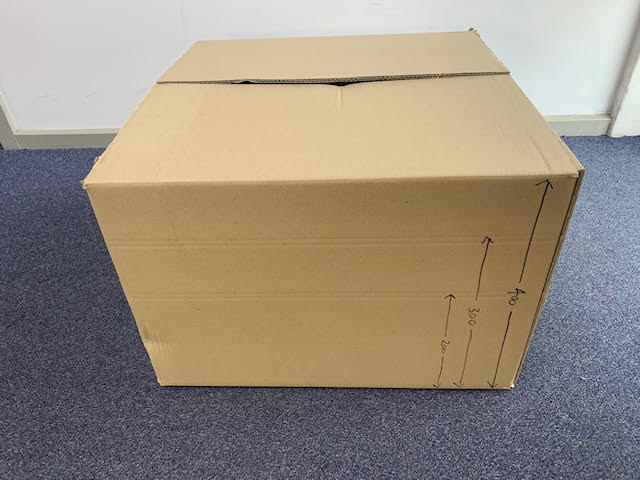4G fibreboard boxes are a common sight in industries that handle hazardous materials. Known for their durability and compliance with international regulations, these boxes are trusted for the safe transport of dangerous goods. But while they seem like the perfect solution, there’s more to these boxes than meets the eye.
Behind the sturdy design and regulatory stamps lie hidden risks that many businesses might overlook. Are these boxes as foolproof as we think, or are we taking unnecessary chances by relying on them without fully understanding their limitations?
What Are 4G Fibreboard Boxes?
These are heavy-duty cardboard boxes designed to transport dangerous goods safely. They are classified under the UN’s packaging code system, where “4G” signifies fibreboard packaging.
These boxes undergo rigorous testing to ensure they can handle tough conditions during transit, such as drops, stacking, and exposure to extreme temperatures. They’re designed to hold inner containers like bottles, cans, or smaller boxes that carry hazardous substances.
When used correctly, they offer a secure way to ship items like chemicals, flammable liquids, or toxic materials. However, as robust as they seem, their effectiveness depends on several factors, including proper usage, handling, and storage.
The Hidden Risks of 4G Fibreboard Boxes
While 4G fibreboard boxes have their advantages, there are risks that businesses need to be aware of:
1. Improper Handling Can Compromise Safety
No matter how well-tested a box is, rough handling can cause damage. Fibreboard, while durable, is still susceptible to punctures, tears, and moisture damage. If a forklift operator accidentally punctures the box or it’s dropped from too high, the integrity of the packaging can be compromised, potentially leading to leaks or spills.
2. They’re Not Waterproof
One of the biggest weaknesses of 4G fibreboard boxes is their vulnerability to moisture. Prolonged exposure to water or high humidity can weaken the box, making it less effective at containing dangerous goods. This is particularly concerning for shipments that might encounter rain, condensation, or accidental spills.
3. Overpacking Can Lead to Failure
Businesses sometimes try to cut costs by packing as much as possible into one box. However, overpacking can exceed the weight limit the box was designed to handle, increasing the risk of collapse or rupture.
Even if the box holds up initially, the added strain can weaken it over time, especially during long-haul transportation.
4. Incompatibility with Inner Containers
Not all inner containers are compatible with 4G fibreboard boxes. If the inner packaging doesn’t fit snugly or isn’t designed to work with fibreboard, the entire system can fail.
For example, using an inner container made of material that reacts with the contents or doesn’t provide sufficient leakage protection can render the outer box ineffective.
5. Misunderstanding Regulatory Requirements
4G fibreboard boxes must meet strict regulatory standards, but these standards only apply when the boxes are used exactly as tested. Any deviation like substituting inner containers or exceeding the approved weight limit invalidates the certification.
Businesses that don’t fully understand these requirements might unknowingly violate regulations, putting safety and compliance at risk.
Balancing Compliance and Practicality

The risks associated with 4G fibreboard boxes don’t mean they’re unsafe. When used correctly, they’re one of the best options for transporting dangerous goods. However, businesses need to go beyond simply purchasing certified boxes. They must also implement proper handling, training, and monitoring practices.
Here are a few steps to mitigate the risks:
1. Train Employees on Proper Handling
Invest in regular training sessions to educate employees about the correct way to handle 4G fibreboard boxes. Emphasise the importance of gentle handling, proper stacking, and avoiding overpacking.
2. Store Boxes in Dry Conditions
To avoid moisture damage, store fibreboard boxes in a dry, climate-controlled area. If shipping in wet conditions is unavoidable, consider using waterproof liners or outer coverings to protect the boxes.
3. Use Compatible Inner Containers
Always check that the inner containers are compatible with the 4G fibreboard box. The containers should fit securely and meet the specific requirements of the hazardous material being transported.
4. Don’t Skimp on Quality
While it might be tempting to go for the cheapest certified box available, not all 4G fibreboard boxes are created equal. Choose a reliable supplier that provides high-quality packaging tested for your specific needs.
5. Conduct Regular Inspections
Before shipping, inspect each box to ensure there are no signs of damage, such as tears, dents, or weakened areas. Catching issues early can prevent accidents down the line.
The Environmental Question
In addition to safety concerns, 4G fibreboard boxes raise questions about sustainability. Most are single-use, meaning they contribute to the growing problem of packaging waste. While the fibreboard itself is often recyclable, the additional materials used for certification such as plastic liners or adhesive labels can complicate the recycling process.
Some companies are exploring reusable options, but these come with their own set of challenges, including cleaning, testing, and recertification. Striking a balance between safety and environmental responsibility remains a significant hurdle for the industry.
The Final Verdict
4G fibreboard boxes play a critical role in shipping dangerous goods, but they’re not a magic solution. Their safety depends on proper handling, following regulations, and using them as intended. Cutting corners or overlooking small details can lead to big problems.
For businesses, it’s about more than just ticking regulatory boxes. It’s about taking the time to train employees, inspect packaging regularly, and ensure that every shipment is safe and secure. At the same time, finding ways to reduce waste and explore eco-friendly options is just as important.
These boxes are a helpful tool, but they’re only as effective as the care and effort you put into using them


